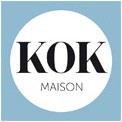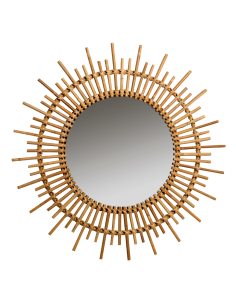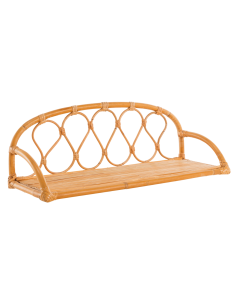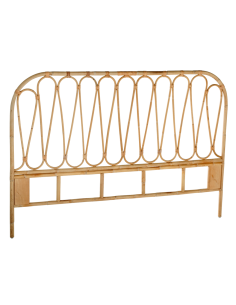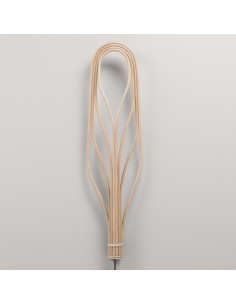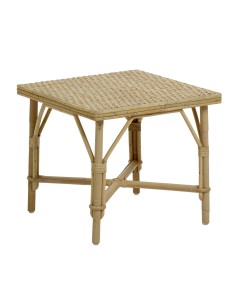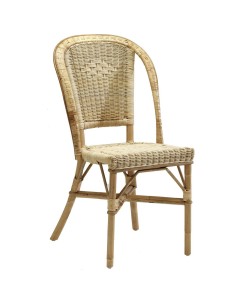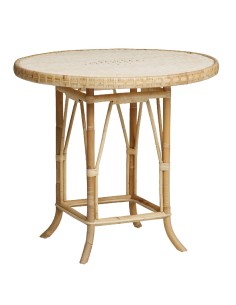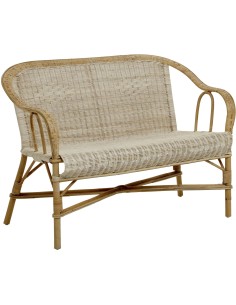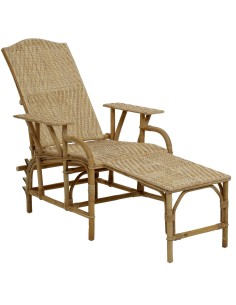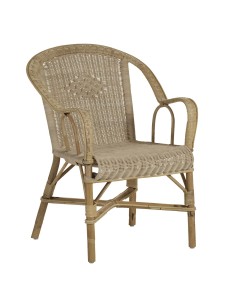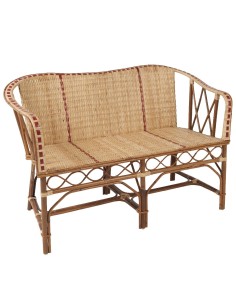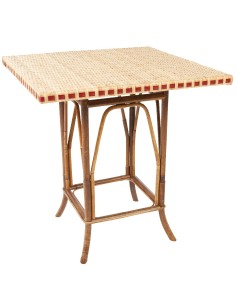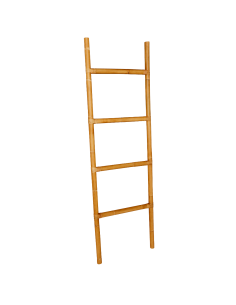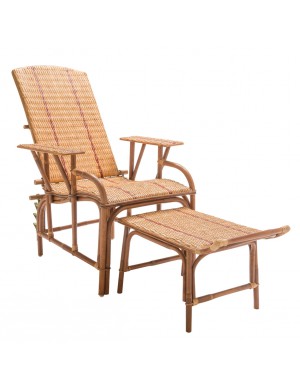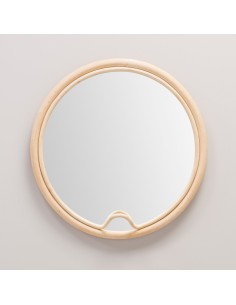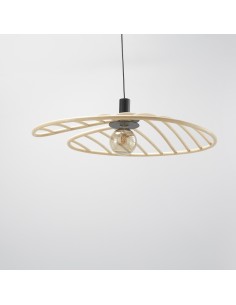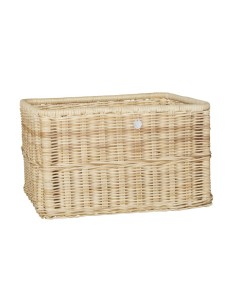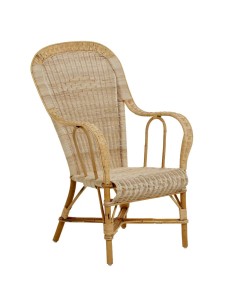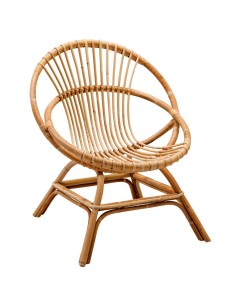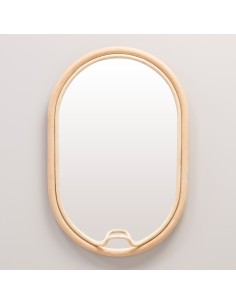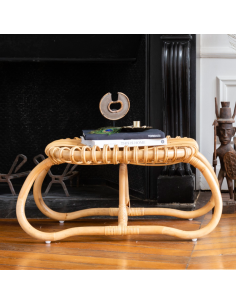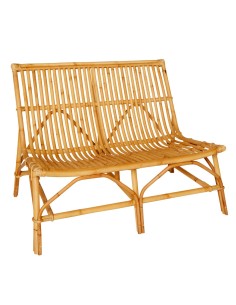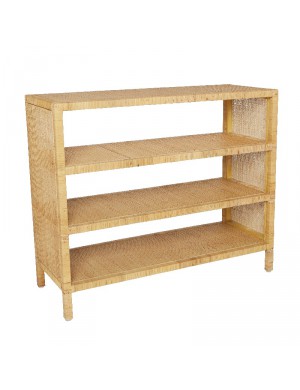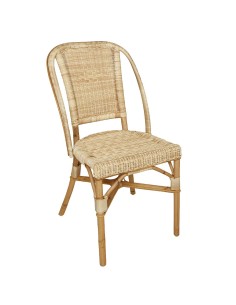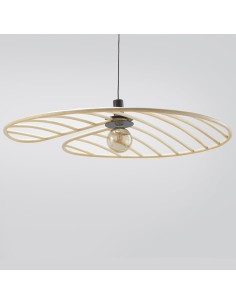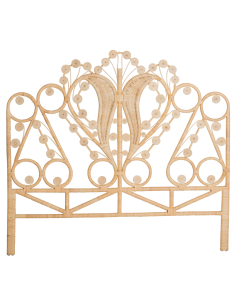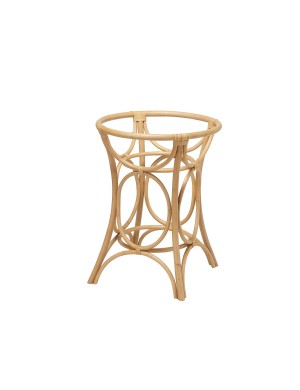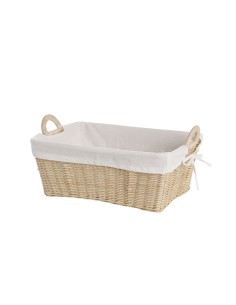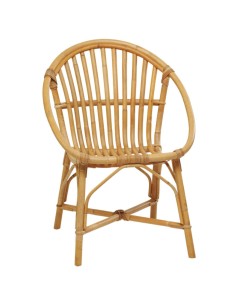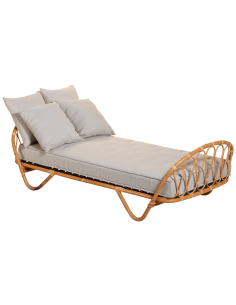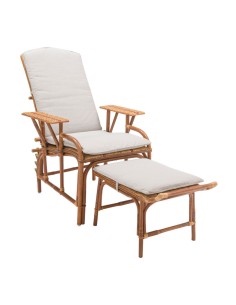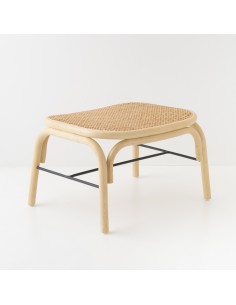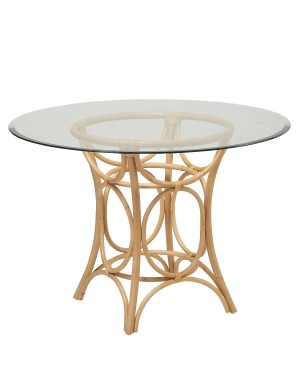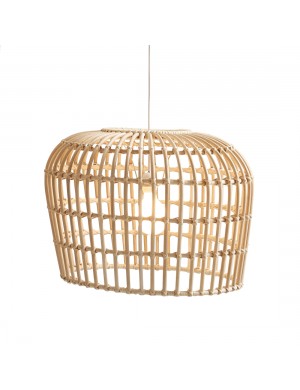Rattan furniture

KOK, an established specialist in rattan furniture for over four generations, knows what it owes to the past and to the golden eras that have made this material a legend. From the rattan chairs of the café terraces of the belle époque to the Emmanuelle armchairs of the 70s, rattan seating has continually reinvented itself, fashion after fashion, defining each time with silhouettes that have become iconic today. So KOK is now relishing re-releasing more than a century and a half of the best rattan in its retro and vintage collection.
Rattan seats from the belle époque, the Bagatelle collection:
At the turn of the 19th century, the art nouveau style, all arabesques, volutes and organic twists, would give the rattan seat its first real golden age. Rattan is indeed very flexible, and, more than any other furnishing material, it lent itself perfectly to the whims of the designers of the time. The cafés established on major boulevards, in spas and botanical gardens weren’t asking for much, but wanted to equip their terraces with a light, robust seat, happy to deal with the vagaries of the weather and aesthetically pleasing. The café terrace chair in rattan was born, embarking upon a career as long as it was international. The chair, armchair, and sofa in rattan, from the Bagatelle range, are genuine period replicas.
The rattan grand-père armchairs of the 20s:
Rattan seating was not only a product of the great capital cities but was also very popular in the countryside and in rural France, France périphérique, as we say today. For much the same reasons as in the city, people were looking for a rattan armchair for its lightness, robustness and comfort, but here it had to be affordable. Grand-père style rattan armchairs were cheap and mass-produced. All the basket makers and rattan workers from France made them more or less the same, and everyone in his own way found tricks to earn a penny here, a penny there, without losing sight of the quality of the product. Improved, rationalised, simplified to the extreme, it makes the most of the natural strength of rattan without wasting a single centimetre. The ancestor of the eco-designed product. We have, therefore, changed nothing at all in this perfectly finished construction, and we have been marketing it as-is for over 75 years. Who knows, the one you’ve always seen at your grandmother’s house may well be a period KOK piece...
The rattan mirrors, the shell armchairs, the basket beds, all the vintage rattan of the 60s
The beginning of the thirty years of post-war economic growth, the advent of industrialisation and the rural exodus dealt a fatal blow to woven rattan furniture. Weaving rattan or wicker is essentially a hand craft, the kind of thing you might do in the evening, but far too time-consuming for the hurried France of the 60s. Rattan furniture then underwent a metamorphosis, replacing weaving with sticks, the name given to the rattan rods that fill the seat and back of a chair. The designs are streamlined, inspired by the modernist style of the time. The fashionable return of this style today, and of the rattan of the 60s in particular, has led many enthusiasts to flea markets to hunt for a rattan sunburst mirror, a rattan Corbeille bed or a rattan Coquille armchair. Through the abuse of language, we could not help but call our re-releases, vintage rattan, after the names of the real vintage rattan you can find at flea markets. We would have preferred to call them “manila“ rattan armchairs as they were called in the old days, but apart from a few older people, nobody knows this term anymore. All we had to do was take our old patterns out of the attic and restart production in the same way: elliptical rattan mirrors, sun, daisy, basket rattan bed, rattan shell armchairs, rattan diabolo table...
The Peacock armchair, the symbol of the 70s
The silhouette of the Emmanuelle armchair became world-famous in the 70s thanks to the eponymous films, but it had already been well-known in Asia for a long time. Originally from Polynesia, this armchair served as a throne for Oceanian dignitaries, hence its spectacular and upright appearance. The story goes that the director of the film found one in the Seychelles during the shooting of the first film while looking for a prop, and so it entered the set rather by chance and embarked upon a much less... formal career! Highly photogenic, it was no beginner in the cinema, as you can see in films from the 30s.
Often associated with retro or vintage products, rattan furniture is also in perpetual renewal, in tune with fashions and trends. Contemporary rattan seating is more of a woven construction, but there are a thousand and one ways to weave it.
Saigon rattan armchair and bar stool
Another way to weave is to leave every other strand open. When using a very finely split rattan, the contrast between the ultra-precise serration of the weave and the strength of the silhouette gives an almost textile appearance, as if an openwork fabric had been stretched over a wooden frame. Our Japanese customers, in particular, appreciate the simplicity of the lines, the meticulous weaving and the solidity of the whole. Of particular note, the ergonomic design of our bar stool is identical to that of the armchair, making it exceptionally comfortable.
